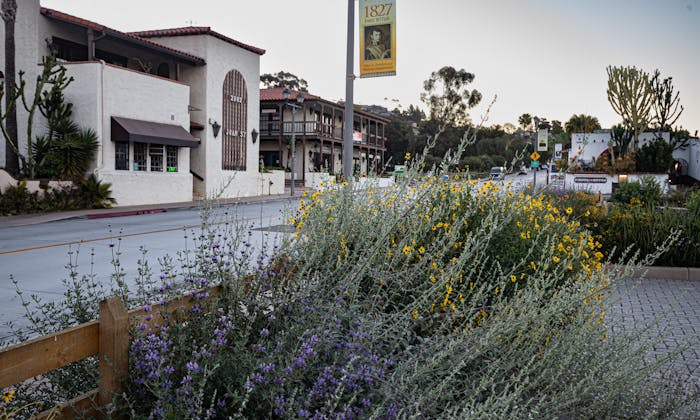A park presented by the Kumeyaay, demonstrating the native plants that once dominated the region, and paying tribute to the indiginous population that occupied it.
When I lived in San Diego, I had a lot of gripes about Old Town, it wasn’t a spot we went to often. But my biggest gripe had to do with the massive mall space, a huge a-historic lawn that belighed the fact that Old Town was always conceived of as a tourist attraction, never as a true memorial to history.
The inclusion of a native demonstration garden near the entrance begins to correct those issues. The landscaping around the shops and restaurants is purely succulents and exotics, but at least now there is a vibrant homage to the original, natural landscaping that once occupied that land.
San Diego’s Old Town is located just south of the San Diego river. This river was extremely important to native tribes, like the Kumeyaay that originally populated the area. The Presidio stands to just to the East, the first known European settlement in California. And the famous San Diego Mission is not far up the river, also attesting to the importance of this river in the development of the region.
If Balboa Park’s native demonstration garden was underwhelming, Old Town’s was quite the opposite. They designated an entire community park to it, called “Tipay Kumeyaay Mut Niihepok: Land of the First People.” It is highly visible to anyone either visiting Old Town as a tourist, or making use of the much utilized Old Town Train Station.
It possesses beautiful specimens of California Fuschia, San Diego sagebrush, San Diego sunflowers, Honey Mesquite and California Sycamores. There are a couple of bioswales, and really beautiful structures used for framing. I witnesses several birds making use of the fuschia and sages, something not always seen at demonstration gardens that are perhaps not large enough to overcome their highly trafficked surroundings.
There was also good signage, the likes of not bettered by many aside from the Mission Trails Visitor Center’s Native Demonstration Garden.
Unfortunately, although highly visible, it isn’t located in a spot that is likely to be visited by tourists. A little bit of parking in the vicinity will bring some foot traffic, but most tourists will likely keep to the south, where the shops and restaurants are located. Still, I saw a number of locals out for a stroll, even in such early morning hours when I visited.
Visiting

